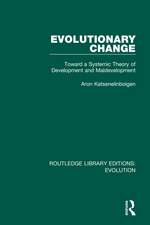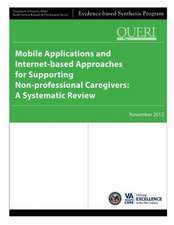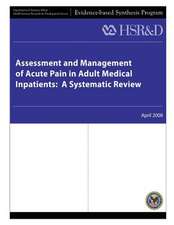In Silico Drug Discovery and Design: Theory, Methods, Challenges, and Applications
Editat de Claudio N. Cavasottoen Limba Engleză Paperback – 26 iul 2017
The book assumes a basic knowledge of physical principles and molecular modeling. Particular attention has been paid to outline the underlying physico-chemical foundation of the methods described, thus providing the necessary background to avoid a "black-box" approach. In each self-contained chapter, this is presented together with the latest developments and applications, and the challenges that lie ahead.
Assembling a unique team of experts to weigh in on the most important issues influencing modern computational drug discovery and design, this book constitutes both a desktop reference to academic and industrial researchers in the field, and a textbook for students in the area of molecular modeling and drug discovery.
Comprised of 18 chapters and divided into three parts, this book:
- Provides a comprehensive, unified, and in-depth overview of the current methodological strategies in computer-aided drug discovery and design
- Outlines the underlying physico-chemical foundation of the methods described
- Presents several applications of computational methods to real world problems in the drug design field
- Helps to avoid a "black-box" approach to in silico drug discovery
- Constitutes an actual textbook for students in the area of molecular modeling and drug discovery
- Gives the reader the adequate background to face the current challenges of the field
| Toate formatele și edițiile | Preț | Express |
|---|---|---|
| Paperback (1) | 690.76 lei 43-57 zile | |
| CRC Press – 26 iul 2017 | 690.76 lei 43-57 zile | |
| Hardback (1) | 1344.40 lei 43-57 zile | |
| CRC Press – 6 aug 2015 | 1344.40 lei 43-57 zile |
Preț: 690.76 lei
Preț vechi: 812.66 lei
-15% Nou
Puncte Express: 1036
Preț estimativ în valută:
132.17€ • 138.37$ • 109.37£
132.17€ • 138.37$ • 109.37£
Carte tipărită la comandă
Livrare economică 07-21 aprilie
Preluare comenzi: 021 569.72.76
Specificații
ISBN-13: 9781138747586
ISBN-10: 1138747580
Pagini: 560
Ilustrații: 97
Dimensiuni: 156 x 234 mm
Greutate: 1.03 kg
Ediția:1
Editura: CRC Press
Colecția CRC Press
ISBN-10: 1138747580
Pagini: 560
Ilustrații: 97
Dimensiuni: 156 x 234 mm
Greutate: 1.03 kg
Ediția:1
Editura: CRC Press
Colecția CRC Press
Public țintă
Academic and Professional Practice & DevelopmentCuprins
The Physical Basis of Ligand Binding. Force-Field Representation of Biomolecular Systems. Library Design, Chemical Space, and Drug Likeness. Ligand-Based Drug Discovery and Design. Pharmacophore Modeling and Pharmacophore-Based Virtual Screening. Protein-Ligand Docking: From Basic Principles to Advanced Applications. Protein-Ligand Docking: Virtual Screening and Applications to Drug Discovery. Protein Structure Modeling in Drug Design. Implicit Solvation Methods in the Study of Ligand-Protein Interactions. Toward Complete Cellular Pocketomes and Predictive Polypharmacology. MM-GB/SA Rescoring of Docking Poses: Tricks of the Trade. Free Energy Calculations of Ligand-Protein Binding. Molecular Mechanics/Coarse-Grained Simulations as a Structural Prediction Tool for GPCRs/Ligand Complexes. Fragment-Based Methods in Drug Design. Role of Water Molecules and Hydration Properties in Modeling Ligand-Protein Interaction and Drug Design. How Protein Flexibility Can Influence Docking/Scoring Simulations. In Silico Approaches Assisting the Rational Design of Low Molecular Weight Protein-Protein Interaction Modulators. Incorporating Binding Kinetics in Drug Design.
Notă biografică
Claudio N. Cavasotto earned his MSc and PhD in physics from the University of Buenos Aires. He conducted his postdoctoral training at The Scripps Research Institute after which in 2002 he moved to MolSoft LLC, La Jolla, California, as senior research scientist, where he remained until 2007. He then became assistant and associate professor at the School of Biomedical Informatics at the University of Texas Health Science Center at Houston. In 2012 he moved to the Biomedicine Research Institute of Buenos Aires-Partner Institute of the Max Planck Society, where he is head of Computational Chemistry and Drug Design. His research interests are primarily biomolecular simulation, computer-aided drug discovery and cheminformatics. His group develops and applies computational methods to study molecular interactions in biological systems, and to design molecules which modulate targets of pharmaceutical relevance.
Recenzii
"... an ambitious book which delivers a great deal of material in one volume. ... a useful addition to the small number of accessible and authoritative books on the subject."
—ChemMedChem, 2016, 11, 638
"… With this book the lids on the algorithm black boxes are lifted and all within the field can clearly see their inner workings. … This book also has the capacity to enthusiastically galvanize those at the cutting-edge of algorithm development. The Thorny problems remaining are illuminated and attacked with vigor, such as how target flexibility and solvation at molecular interfaces can be more accurately modeled and how this may ultimately feed into a better determination of BINDING free energies and the calculation of accurate kinetic parameters."
—Dr. Paul A Bates, The Francis Crick Institute
"… a solid, current, well-written and well-organized set of reviews of important topics in in silico drug discovery. It should be useful for readers, ranging from students to senior scientists, who are looking for accessible overviews of this material."
—Mike Gilson, University of California, San Diego, USA
—ChemMedChem, 2016, 11, 638
"… With this book the lids on the algorithm black boxes are lifted and all within the field can clearly see their inner workings. … This book also has the capacity to enthusiastically galvanize those at the cutting-edge of algorithm development. The Thorny problems remaining are illuminated and attacked with vigor, such as how target flexibility and solvation at molecular interfaces can be more accurately modeled and how this may ultimately feed into a better determination of BINDING free energies and the calculation of accurate kinetic parameters."
—Dr. Paul A Bates, The Francis Crick Institute
"… a solid, current, well-written and well-organized set of reviews of important topics in in silico drug discovery. It should be useful for readers, ranging from students to senior scientists, who are looking for accessible overviews of this material."
—Mike Gilson, University of California, San Diego, USA
Descriere
This text provides an overview of the current methodological strategies in computer-aided drug discovery and design.




























